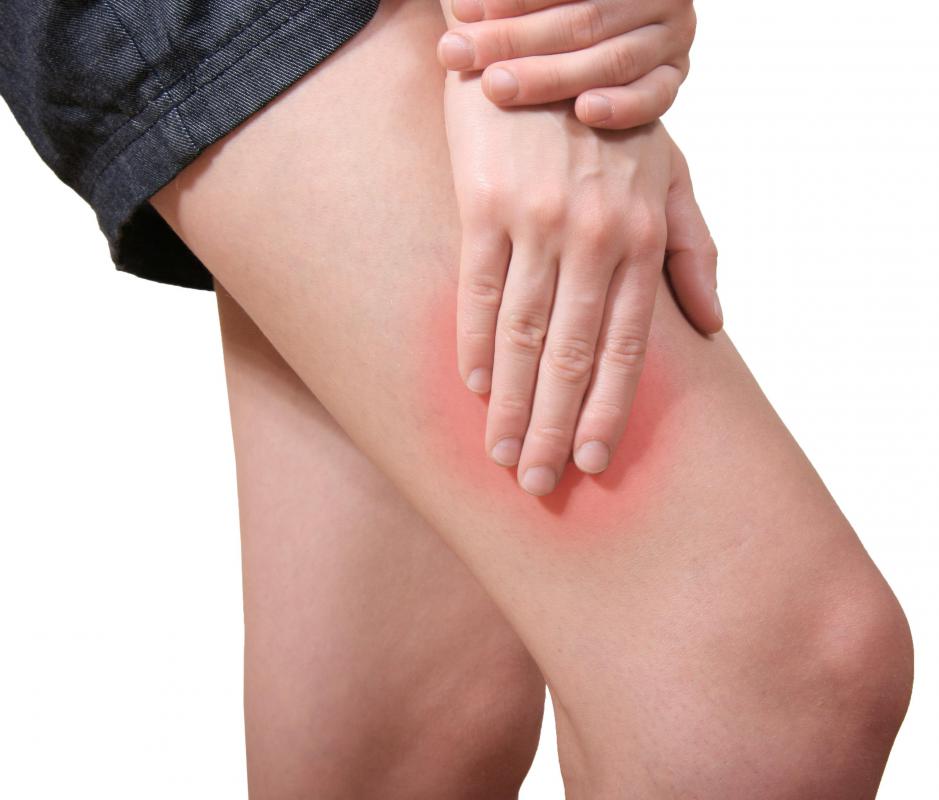At WiseGEEK, we're committed to delivering accurate, trustworthy information. Our expert-authored content is rigorously fact-checked and sourced from credible authorities. Discover how we uphold the highest standards in providing you with reliable knowledge.
What is a Fire Ant?
A fire ant is one of over 280 species of stinging ants common to many parts of the world. These small, copper-colored ants with a dark abdomen earned their name by the intense burning sensation caused by their stings. They are extremely aggressive and will quickly swarm and attack anything or anyone that disturbs their nest. They can kill other insects, small animals, livestock, and even cause death in humans if the victim is unfortunate enough to be allergic to fire ant toxin.
Like other ants, the fire ant lives in a highly socialized colony that caters to a larger, winged queen. The queen can lay over 1,500 eggs per day, and lives from two to seven years. Her unfertilized eggs turn into winged males with whom she can mate, though mates die shortly thereafter. Fertilized eggs become immature queens and female workers who might also become soldiers, guards or diggers. A single colony can support multiple queens, unusual among ant species.

Fire ant eggs are stored in chambers inside the colony, tended to by young workers. The eggs hatch into helpless larvae, dependent on the workers for food and protection. This type of ant has two stomachs, one for digesting food for itself, the other for regurgitating food to feed larvae or to share with others. It can change jobs as needed, or as the ant ages. Workers live about six months.

Guard ants or soldiers stake out the entrance of the nest, standing watch for intruders or danger as workers come and go. The oldest and most expendable fire ant workers are foragers, wandering furthest from the nest (up to 100 feet or 33m) into dangerous territory in search of food. When successful, they leave a chemical trail as they drag food back to the nest. Others follow the trail to the food source leaving their own chemical trials, reinforcing the pathway. Once the food source is gone, the trail is no longer reinforced and the chemical scent fades.
The colony is built underground and might extend five feet (1.52m) in depth. Normally the crown is invisible under fallen timber, rocks, pavement, or other cover, but in an open field it will appear as a large mound up to 15 inches (38cm) in height.

Disturbing a nest or mound will cause the ants to mount an attack, climbing the extremities of the intruder. Once situated, the ant uses its mandibles to bite into the flesh in order to grab hold of the victim. This bite hurts, but it’s the abdomen’s stinger that shoots a burning toxin into the victim. A fire ant can keep hold with its jaws, then twist it’s body in an arc, stinging over and over again in a circular pattern. The toxin is piperidine, the same alkaloid that gives black pepper its bite.

A bite from a fire ant can develop a pustule or white head, though it’s better not to pick or scratch at these bites as they can easily scar. Instead, treatment to stop the itching is recommended, such as a hydrocortisone cream, ammonia, peroxide, aloe vera, vinegar, a salt paste, a 50/50 solution of bleach and water, or a brand medicine made especially for bites from these ants. You can also use ice. Washing the bite with soap and water is good for cleansing, but the toxin is 95% non-water-soluble so it won’t help to flush the toxin away. Bites might take weeks to heal.

An antihistamine such as Benadryl™ might help prevent allergic reactions and swelling, but if you feel chest pain, notice loss of breath, slurred speech, extreme swelling, or have other adverse symptoms, see a doctor or poison center immediately as this could indicate a severe reaction.
It can be difficult to rid an area of fire ants, and caution is recommended that one avoids methods or chemicals that will harm or eradicate other ant species, insects or animals in the area, as these other species make it more difficult for the ant to take over by competing for food and space. Wiping out competition can actually worsen the problem over time. For this reason, generalized ant bait traps and insecticides are not recommended. Instead use natural means or products targeted towards these ants specifically.
AS FEATURED ON:
AS FEATURED ON:


















Discussion Comments
After a fire ant bite, we either take benedryl in pill form or rub it on the site of the bite.
Another great natural treatment for a fire ant sting is to rub tea tree oil on the bite. This will reduce the sting and also the rise of the pustule. These ants are a feisty bunch. We have to keep an eye out for them all the time.
Great fire ants information. Another important aspect of dealing with fire ants is knowing that we become less immune to their bites, not more.
Each time we get bitten by fire ants, our symptoms can become more painful and exaggerated. We don't build up an immunity to their bites, we become more susceptible to their horrible venom.
I can still remember a friend of mine setting her little boy (in a diaper) down on the grass in her yard. After a few minutes we all noticed ants crawling on his stomach. He was being bitten by fire ants and we all screamed and ran for the hose to douse him off with cool water immediately.
Her baby ended up having to go to the pediatrician because his bites swelled up and he began showing allergic symptoms.
Fire ants are a terrible problem in Florida lawns; for both humans and pets.
Post your comments